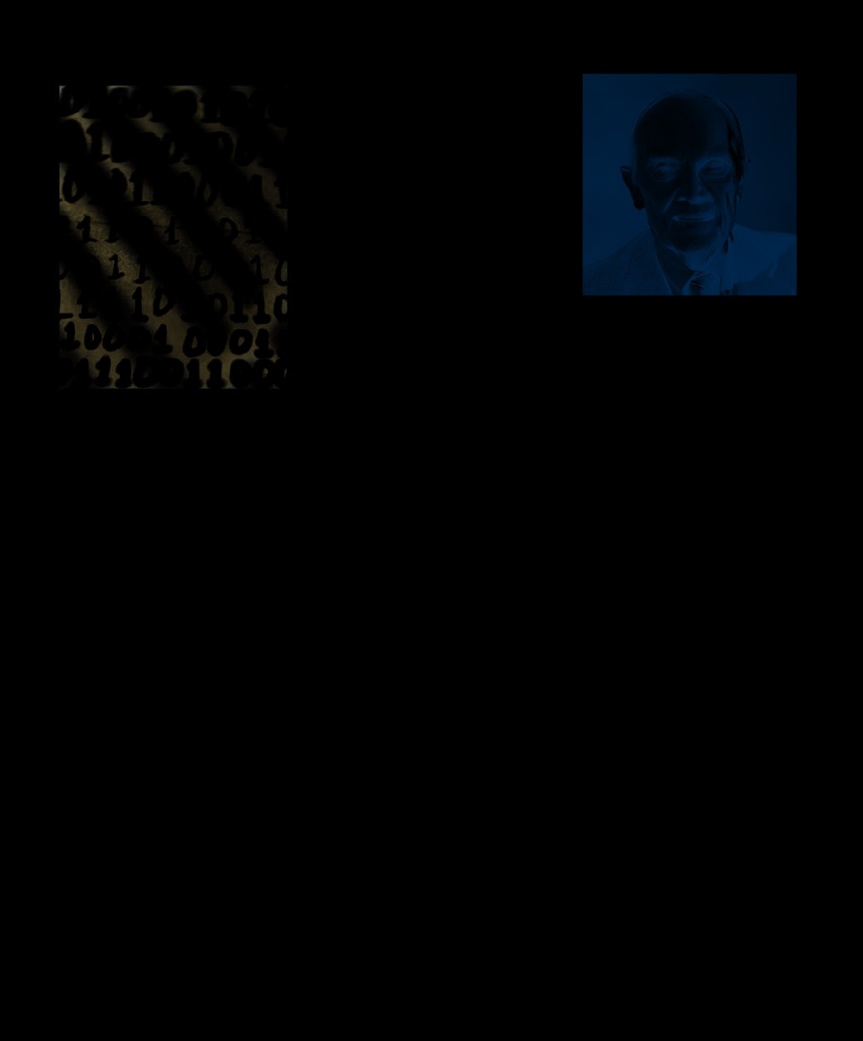The Psychology Book (54 page)
Read The Psychology Book Online
Authors: Unknown

embraced—focused on the study of
Miller’s main interest was in the
delusions of persecution.” Despite
mental processes, such as memory
field of psycholinguistics, stemming
the whimsical nature of his title
and attention. At the same time,
from his work during World War II on

COGNITIVE PSYCHOLOGY 171
See also:
Hermann Ebbinghaus 48–49 ■ Bluma Zeigarnik 162 ■ Donald Broadbent 178–85 ■ Endel Tulving 186–91 ■
Gordon H. Bower 194–95 ■ Daniel Schacter 208–09 ■ Noam Chomsky 294–97 ■ Frederic Bartlett 335–36
by the recurrence and possible
accurately assigning numbers to
significance of the number seven;
each of them, but above seven
“sometimes a little larger and
(give or take one or two), the
sometimes a little smaller than
results deteriorated dramatically.
usual, but never changing so much
In another experiment, by
The persistence with
as to be unrecognizable.”
Kaufman, Lord,
et al,
in 1949,
The first instance of the
researchers flashed varying numbers
which this number
“magical” number came from
of colored dots on to a screen in
plagues me is far more
experiments to determine the
front of participants. When there
than a random accident.
span of absolute judgment—how
were fewer than seven dots,
George Armitage Miller
accurately we can distinguish a
participants could accurately
number of different stimuli. In one
number them; when there were
experiment cited in Miller’s paper,
more than seven, participants were
the physicist and acoustic
only able to estimate the number
specialist Irwin Pollack played a
of dots. This suggests that the
number of different musical tones
span of attention is limited to
to participants, who were then
around six, and caused Miller to
speech perception, which formed the
asked to assign a number to each
wonder whether the same basic
basis for his doctoral thesis. This
tone. When up to around seven
process might be involved in both
led him to take an interest in the
different tones were played, the
the span of absolute judgment
growing field of communications,
subjects had no difficulty in
and the span of attention. ❯❯
which in turn introduced him
to information theory. He was
particularly inspired by Claude
Shannon, a leading figure in
communications, who was
investigating effective ways of
turning messages into electronic
signals. Shannon’s communication
model, which involved translating
ideas into codes made up of “bits,”
underpins all digital communication.
Miller was inspired to look at mental
processes in a similar way, and to
establish the ground rules for the
modern field of psycholinguistics
in his 1951 book,
Language and
Communication
.
Seven categories
Miller took Shannon’s method of
measuring information and his idea
of “channel capacity” (the amount
of information that can be processed
by a system) and applied it to the
An experiment into the span of attention
presented
model of short-term memory as an
participants with random patterns of dots flashed on a
information processor. This was
screen for a fraction of a second. Participants instantly
when he began to be “persecuted”
recognized the number if there were fewer than seven.

172 GEORGE ARMITAGE MILLER
The tones and dots in these
took this idea of channel capacity
experiments are what Miller calls
a stage further, applying it to the
“unidimensional stimuli” (objects
model of short-term memory.
that differ from one another in only
William James first proposed the
one respect); but what interested
notion of short-term memory, and
Miller is the amount of information
it had long been an accepted part
The process of memorizing
in speech and language we can
of the model of the brain as an
may be simply the
effectively process, and items such
information processor, coming
formation of chunks…
as words are “multidimensional
between the sensory input of
until there are few enough
stimuli.” He looks to later studies by
information and long-term memory.
chunks so that we can
Pollack in which the simple tones
Hermann Ebbinghaus and Wilhelm
recall all the items.
were replaced by tones that varied
Wundt had even suggested that
George Armitage Miller
in six ways (such as pitch, duration,
short-term memory had a capacity
volume, and location). Surprisingly,
limited to around seven items
despite the apparently larger amount
(seven, again). Miller believed that
of information, the results still
what he called working memory
pointed to a differential limit of
had a capacity that corresponded
seven, plus or minus two. The
to the limits of absolute judgment
difference is that as more variables
and span of attention.
are added, accuracy slightly
that by the same principle,
decreases. Miller claims this allows
Bits and chunks
working memory organizes “bits”
us to make “relatively crude
In terms of our ability to process
of information into “chunks,” to
judgments of several things
information, if working memory is
overcome the informational
simultaneously.” It may explain how
limited to about seven elements,
bottleneck caused by our limited
we are able to recognize and
there is a potential bottleneck
spans of absolute judgment and
distinguish such complex things as
restricting the amount that can be
short-term memory. A chunk is not,
spoken words and people’s faces,
put into long-term memory. But
however, just an arbitrary grouping,
without having to process the
Miller suggested that there was
but an encoding of bits into a
individual sounds or features.
more to the correspondence than
meaningful unit; for example, a
Miller sees the human mind as
just the number seven, no matter
string of 21 letters represents 21
a communication system: as the
how magical it appeared. The
bits of information, but if this can
input information increases, the
multidimensional stimuli of
be broken down into a sequence
amount transmitted to the brain
previous experiments could be
of three-letter words, it becomes
also increases initially, before
seen as composed of several “bits”
seven chunks. Chunking is
leveling off at an individual’s
of related information, but treated
dependent on our ability to find
“channel capacity.” Miller then
as a single item. Miller believed
patterns and relationships in the
Supercalifragilisticexpialidocious
Super
cali
fragi
listic
expi
ali
docious
Miller’s theory of chunking
says that by building
up or breaking down long streams of numbers or letters
into memorable chunks, we increase the amount of
information we can hold in working memory.

COGNITIVE PSYCHOLOGY 173
Binary code
is a way of recoding
information into ever-more tightly
packed parcels (through multibase
arithmetic). Miller claims our chunking
process operates in a similar way.
powerful weapon for increasing the
amount of information we can deal
with.” It effectively stretches the
informational bottleneck.
The study of memory
Miller himself moved away from
the subject of memory in his later
George Armitage Miller
research, but his theory prompted
George Armitage Miller was
others to examine it in more detail.
born in Charleston, WV. After
Donald Broadbent argued that the
graduating from the University
real figure for working memory is
of Alabama in 1941 with an
probably less than seven, and this
MA in speech pathology, he
bits of information. To someone
was later confirmed in experiments
earned a PhD at Harvard in
who does not speak the same
by Nelson Cowan, who found it to
psychology, working in Stanley
language, the seven words might
be around four chunks, depending
Smith Stevens’ Psychoacoustic
be meaningless, and would not
on the length and complexity of the
Laboratory, with Jerome
constitute seven chunks, but 21 bits.
chunks, and the age of the subject.
Bruner and Gordon Allport.
Miller’s theory was backed up
In the conclusion to his paper,
During World War II the
by earlier experiments by other
Miller is dismissive of the
laboratory was asked to help
psychologists. In 1954, Sidney
significance of the number
with military tasks such as
radio jamming.
Smith conducted experiments in
that originally prompted it. He
In 1951, Miller left Harvard
memorizing a sequence of binary
concludes by saying: “Perhaps there
for Massachusetts Institute
digits—a meaningless string of
is something deep and profound
of Technology (MIT), then
ones and zeroes to anyone
behind all these sevens… but I
returned to Harvard in 1955,
unfamiliar with the binary system.
suspect that it is only a pernicious,
where he worked closely with
Smith broke the series down into
Pythagorean coincidence.” ■
Noam Chomsky. In 1960, he
chunks, at first into pairs of digits,
cofounded the Harvard Center
and then in groups of three, four,
for Cognitive Studies. He later
and five, and then “recoded” them
worked as a professor of